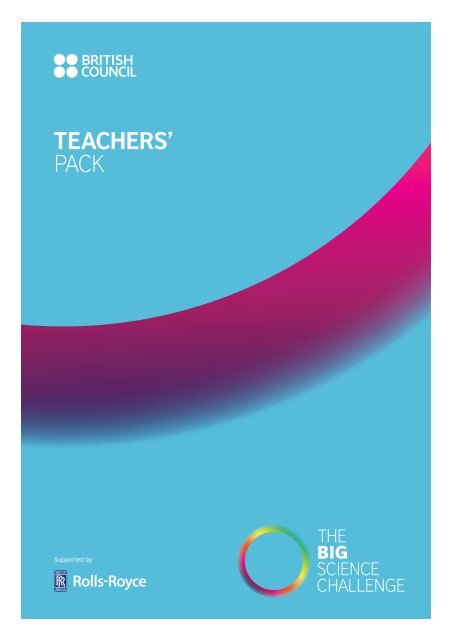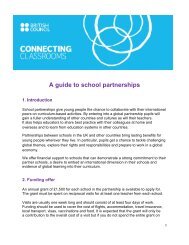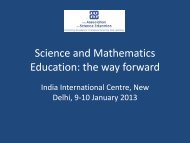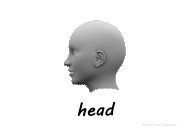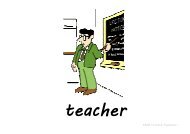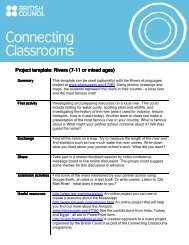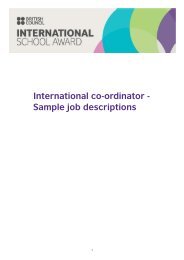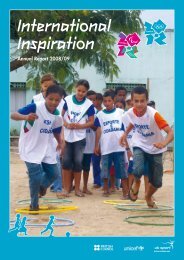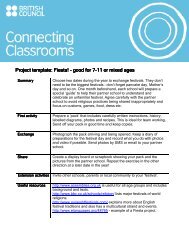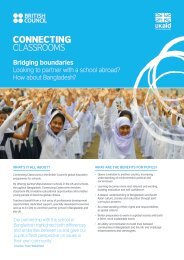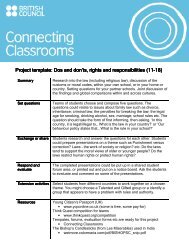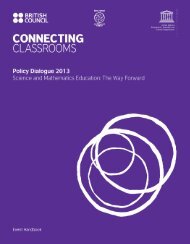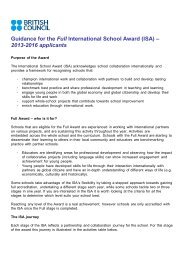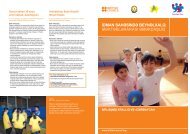English - British Council Schools Online
English - British Council Schools Online
English - British Council Schools Online
Create successful ePaper yourself
Turn your PDF publications into a flip-book with our unique Google optimized e-Paper software.
Aimsa. To find out more about how water issues relate to your students and how these same issues affectother young people in other countries.b. To use local solutions to solve global problems such as water shortage.c. To develop sustainable, low cost solutions to global problems.d. To use the language of science to build bridges between countries, bring students together andengage them in science in a fun and creative way.There are four stages to this activity and it is recommended that all four stages are clearlylabelled in entries to show they have all been addressed:1. Identify – Students decide on the challenge. They will need to clearly articulate this.2. Research – Students can carry out online or library research, or ask experts (locally andinternationally) to find out some of the ideas that already exist. They should write up their findingswith correct use of a bibliography. They will need to include comments on what goes on in othercountries compared to their own. The competition entry must include evidence that you haveconsidered one of the international criteria highlighted below in the ‘eligibility criteria’ section.3. Investigate – Students have to do some of the science experiments related to the problem andsolution. They should write up the practical activities they have carried out and the results theyhave found.4. Solve – Using all of this information, students have to design a low cost, innovative and creativesolution to the water shortage problem. This might be cleaning water, capturing rain water, findingways to reuse dirty water for agriculture, or other means. Whichever challenge they choose, theywill need to submit diagrams and scientific explanations, or, if they prefer, working models relatingdirectly to the problem they have identified. You should make this as fun and creative as possible!Some extra help on researchStudents should try to find out what solutionsare already being used in their country.The Big Science Challenge is an internationalcompetition so we are encouraginginternational collaboration between schoolsin the UK and Middle East. To help with yourresearch, there is additional data on each ofthe eligible countries on our interactive map,as well as a resource bank, on our website.We have also set up an international forum soyou can exchange ideas and information withteachers in these countries and post questionson behalf of your students. In order to do this,you will need to register on our website.Some questions to consider• What mechanical and chemical processesare being used?• How many steps are there in the processand what are they?• How much does it cost? How big is it?How much energy does it use?• Is it reliable/effective/efficient?• Are there any problems/alternatives?• How do scientists check it works?• Is it done like this in other countries too?If not, how is it different? Why?3
Some resources to get you started (there are many more!):• www.ltscotland.org.uk• www.awwmag.com/pdf/AWW_XXXIV_4.pdf• www.teachersdomain.org/resource/ess05.sci.ess.watcyc.h2otreatment/• openlearn.open.ac.uk/course/view.php?id=2457• www.watercare.org/RainCatcher/• www.fi.edu/guide/schutte/water_links.html• www.ukrivers.net/pollution.html• www.historyofwaterfilters.com/• www.driversofchange.com/water/• www.thameswater.co.uk/wiseuptowater/• www.bbc.co.uk/schools/riversandcoasts/water_cycle/rivers/index.shtml• www.groundwateruk.org/Groundwater-Basics.aspx• mideastenvironment.apps01.yorku. ca/?p=2783Remember, students need to state the findings of their research andinclude comments on similarities and differences between countries,especially if this involves talking to other countries directly.Some extra help on investigationsStudents should investigate some of the science behind their problem and solution.For example, if they were trying to clean a sample of undrinkable water they could:1. Start by testing smell, colour, transparency, pH, density, salts remaining, living things, etc.2. Use equipment such as:• samples of dirty water• universal indicator, litmus paper or pH meter• long tube and paper with cross or flat-bottomed glass and torch• accurate weighing scales (to 0.1g) and measuring cylinder or hydrometer• microscope or hand lens.3. Investigate pH – this should be between 6.5 and 8.5, with pure water having a pH of 7.0.Test with universal indicator or litmus paper (or use the extracted dye from cabbage leavesor other vegetables).4. Investigate transparency (or turbidity). Stand a long tube on its end on a piece of paper with ablack cross on it. Pour water in the tube and see how much water the students can add beforethe cross can no longer be seen. The cleaner the water, the more water is needed. Alternatively,shine a torch through a sample of the water in a flat-bottomed glass and look at the path of theflashlight beam. Compare this with clean water.5. Investigate density (pure water has a density of 1 g/mL). Take a sample of seawater or otherwater with a significant salt content. Weigh a measuring jug. Measure the volume of about 100mLof water in the measuring jug. Weigh the jug plus the water and take away the weight of the jug.Is the answer 1 g/mL?6. Investigate evaporation. Place the dish in full sunlight and, if necessary to prevent dust, coverit with a transparent cover that allows the air to circulate. It may take a day or more to evaporateso monitor it periodically. See what is left behind in the dish.7. Students might also want to investigate removing gases, neutralising, filtering, disinfection, etc.Remember that students need to make thorough notes of their experiments and observationsand include evidence of engagement with other schools in other countries (where feasible).4
Some extra help on solutionsOnce students have identified the problem, researched some solutions and investigatedsome of the science, their task is to…Design an energy efficient, innovative and creativesolution to a real water shortage problem.You should try and provide as little direct help as possible at this stage.Your role is to ensure that students:• have clearly labelled drawings of their system• have noted all of the materials needed• have used the science they have learnt during the project to explain their system and how it works• have worked out the cost to make the system and considered the energy used to operate it• have displayed their system as an annotated diagram/poster or as a prototype with notes ina booklet or as a PowerPoint presentation.Students will not need to produce a prototype of their system (although they can if they want toand you have the time and resources).You should also try and encourage the students to be creative and original. Are they going todevelop a water filtration system that turns contaminated water into clean drinking water? Or away to collect and reuse used water in a mosque for washing? Or develop a system for growingcrops using salt water? Or something else? It is important they consider the energy used tooperate the system they have designed.Some real life examples for inspiration...• The Australians invented waterless car wash that lets you wash your car without buckets, hoses orgallons of water. The compound gets misted onto your car. Once there, it electrostatically attracts dirtand encapsulates it. The owner then wipes their car with a soft cloth.• The seawater greenhouse, designed by UK scientists, creates fresh water from seawater. It involvespumping seawater to an arid location, using it to humidify and cool the air inside a greenhouse, and thenevaporating it by solar heating and distilling it to produce fresh water to grow plants such as tomatoes.• For the fog collection system in Chile, coastal fog is caught using structures that resemble oversizedvolleyball nets. As fog passes through the nets, beads of water form on the mesh and run down into areservoir. This can ‘catch’ 10,000 litres of water every day and requires no energy to run.Remember, all of the student drawings, notes, visuals andscience explanations should be presented. The key to successin the challenge is the thought process, the design processand the rationale behind the solutions chosen – student’s canbe as imaginative and speculative as they like, as long as theyjustify their decisions.5
Cultural understanding• Recognising that modern science has its roots in many different societies and cultures, and draws ona variety of valid approaches to scientific practice (UK).• Generating informed views about the ethics of local and global uses of scientific discovery (Middle East).• Studying science in local, national and global contexts (UK).• Sharing developments and common understanding across disciplines and boundaries (UK).• Using real-life examples as a basis for finding out about science (UK).Design• Understanding that designing and making has environmental, technical, economic, ethical and socialdimensions and impacts on the world (UK).• Applying knowledge of materials and production processes to design products and producing practicalsolutions that are relevant and fit for purpose (UK), and evaluating your design (Middle East).• Generating, developing, modelling and communicating ideas in a range of ways, using appropriatestrategies (UK) or communicating results and conclusions (Middle East).• Responding creatively to briefs, developing their own proposals and producing specifications forproducts (UK).As teachers, you will need to:• be knowledgeable about science and have a sufficient level of <strong>English</strong> to participate in the UK prize(or be able to delegate to another teacher who has)• be motivated to find new and creative ways of engaging your students with science• be open to introducing new concepts and issues to your students.The Big Science Challenge aims to engage more students in science;make this as fun and creative for your students as you can.Good luck!7


